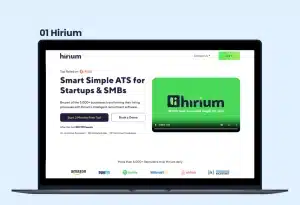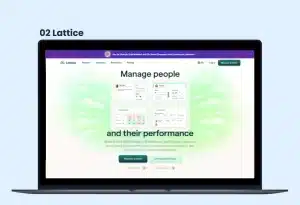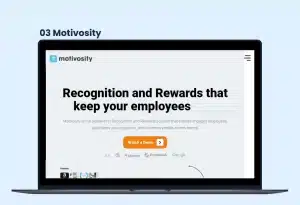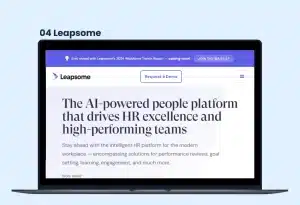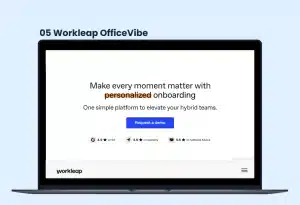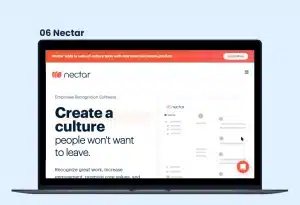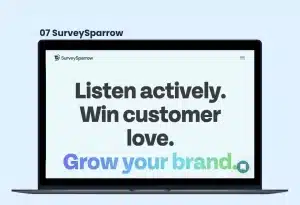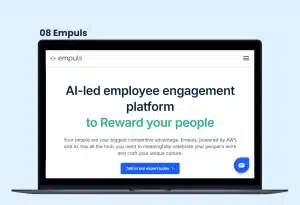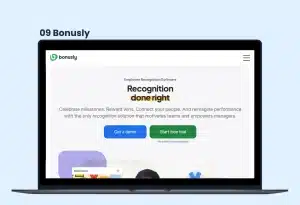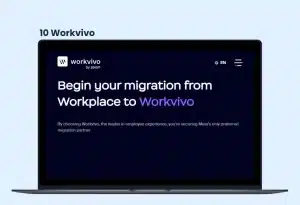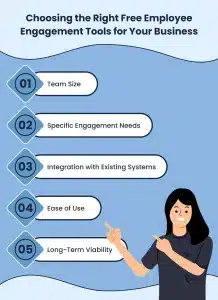Table of content
Fortunately, driving employee engagement doesn’t have to strain your budget. Numerous free tools are available that can help businesses promote effective communication, deliver meaningful recognition, and gather valuable feedback—all without a hefty price tag.
This blog will explore some of the top free employee engagement tools for 2024 that are both user-friendly and highly effective. For further insights into measuring engagement levels, be sure to explore Employee Engagement Metrics, a crucial component in tracking the success of your engagement efforts.
Why Employee Engagement Matters?
Employee engagement goes far beyond mere job satisfaction. It’s about creating an environment where employees feel valued, motivated, and connected to their work. Engaged employees are more productive, show greater loyalty, and are less likely to seek employment elsewhere.
What Are Employee Engagement Tools?
Employee engagement tools are platforms or software designed to foster workplace interaction, communication, recognition, and feedback. These tools enhance employees’ connection with their organization, peers, and managers. The primary goal is to keep employees motivated, appreciated, and heard, increasing their productivity and loyalty.
Top 10 Free Employee Engagement Tools
Engaging employees is key to a productive workforce. Here are the top 10 free employee engagement tools that foster communication, recognition, and feedback, helping businesses enhance workplace culture and boost employee satisfaction—without extra costs.
1. Hirium
Hirium is a versatile tool for enhancing employee engagement through performance tracking, goal setting, and 360-degree feedback. It helps small and large organizations build a culture of continuous feedback and personal development.
Key Features:
- Real-time performance tracking: Managers and employees can track performance metrics and KPIs in real-time, allowing for continuous improvement.
- 360-degree feedback: This feature facilitates comprehensive feedback from peers, managers, and subordinates, ensuring a holistic view of employee performance.
- Employee goal setting: Allows employees and managers to set, track, and evaluate individual and team goals, ensuring alignment with broader company objectives.
- Data-driven insights: Provides managers with actionable insights through data analysis, helping to make informed decisions on employee development and engagement strategies.
Pros and Cons
Pros:
- Easy-to-use interface
- Provides detailed employee insights
- Free version includes core engagement features
Cons:
- Limited integration with other platforms
- Paid plan required for larger teams
2. Lattice
Lattice promotes continuous performance management by enabling frequent check-ins, goal tracking, and feedback. It’s an excellent tool for keeping employees aligned with company goals while also supporting their growth.
Key Features:
- Goal setting and tracking: Employees can set personal and professional goals that align with the organization’s objectives. Goals can be updated in real-time, ensuring continuous alignment.
- Continuous performance feedback: Lattice provides an ongoing feedback loop, allowing employees to receive timely, constructive insights on their performance.
- Employee performance analytics: Lattice generates reports and analytics on employee performance, helping managers identify top performers areas for improvement and track overall employee engagement.
Pros and Cons
Pros:
- User-friendly interface
- Great for tracking employee development
- Free plan provides basic engagement tools
Cons:
- Advanced features require a paid plan
- Limited customization in the free version
3. Motivosity
Motivosity is a tool built to strengthen workplace relationships by encouraging peer recognition and rewards. The platform uses a points-based recognition system to boost employee morale and foster a culture of appreciation.
Key Features:
- Peer recognition and rewards: Employees can send virtual “kudos” or reward points to peers for accomplishments, encouraging a positive and supportive work culture.
- Leaderboards and badges: Gamification elements like leaderboards and badges incentivize employees to engage more frequently and celebrate successes.
- Real-time feedback: Allows for continuous feedback between peers and managers, promoting transparency and collaboration in the workplace.
Pros and Cons
Pros:
- Encourages team collaboration and positivity
- Gamified elements increase employee engagement
- Free version includes essential recognition tools
Cons:
- Some features are locked behind a paywall
- Best suited for small to mid-sized teams
4. Leapsome
Leapsome combines performance management and learning to offer a holistic approach to employee engagement. It’s focused on personal development through feedback, goal-setting, and learning pathways.
Key Features
- Performance reviews and 1:1 meetings: Facilitates structured performance reviews and one-on-one meetings, ensuring employees receive regular feedback and personal growth discussions.
- Feedback and survey capabilities: Leapsome allows for both structured and ad-hoc feedback, enabling managers to gather insights about employee satisfaction and engagement.
- Learning modules for employee development: Offers customizable learning paths that allow employees to continue developing their skills, which can lead to higher engagement and retention.
Pros and Cons
Pros:
- Integrates performance and learning
- Detailed employee feedback system
- Free version offers performance tracking
Cons:
- Learning module access is limited in the free plan
- Paid plans offer significantly more functionality
5. Workleap OfficeVibe
Workleap’s OfficeVibe helps organizations improve employee engagement by gathering anonymous feedback and turning it into actionable insights. It’s designed to help managers measure and boost engagement in real time.
Key Features:
- Customizable employee surveys: OfficeVibe allows you to create tailored surveys to measure employee satisfaction, stress levels, and engagement.
- Anonymous feedback: Employees can provide candid, anonymous feedback, helping managers identify pain points and areas for improvement without fear of judgment.
- Engagement metrics and reports: The platform compiles the feedback into easy-to-understand reports and dashboards, giving managers a clear overview of team engagement levels and suggestions for improvement.
Pros and Cons
Pros:
- Allows for anonymous feedback
- Provides detailed analytics for managers
- Free plan available with core engagement features
Cons:
- Limited integrations in the free version
- Some feedback customization requires upgrading
6. Nectar
Nectar is a peer recognition platform that enables teams to reward each other for hard work and milestones. It also offers a customizable rewards catalog that can be tailored to fit the company’s culture and preferences.
Key Features
- Peer recognition system: Allows employees to give and receive recognition in real-time, reinforcing positive behaviors and accomplishments.
- Customizable rewards catalog: Teams can choose from a wide variety of rewards, from gift cards to experiences, fostering motivation and appreciation.
- Points-based recognition system: Employees can accumulate points for their contributions, which can later be redeemed for rewards, providing a tangible incentive for engagement.
Pros and Cons
Pros:
- Free version provides core recognition features
- Gamification encourages employee participation
- Customizable rewards options
Cons:
- Paid plans needed for advanced features
- Limited reward options in the free version
7. SurveySparrow
SurveySparrow is a survey tool that allows businesses to create conversational and engaging surveys to collect feedback from employees. It helps track engagement levels and provides insights into areas of improvement.
Key Features
- Easy-to-use survey builder: SurveySparrow’s drag-and-drop interface makes creating surveys simple, allowing you to gather feedback on employee engagement or other metrics quickly.
- Anonymous feedback capability: Employees can provide anonymous input, ensuring honest and candid responses that lead to actionable insights.
- Mobile-friendly surveys: Surveys created with SurveySparrow are responsive and mobile-friendly, ensuring employees can participate from any device at their convenience.
Pros and Cons
Pros:
- Free plan available for basic surveys
- Supports anonymous feedback
- Simple and intuitive interface
Cons:
- Limited number of responses in the free version
- Some features are restricted to paid plans
8. Empuls
Empuls offers an all-in-one solution for improving employee engagement, promoting peer recognition, and gathering feedback. It also helps build a strong organizational culture through regular engagement activities.
Key Features
- Employee recognition and rewards: Empuls promotes a culture of appreciation by allowing employees to reward peers for exceptional work or milestones.
- Custom engagement surveys: You can create surveys tailored to your company’s needs, allowing for detailed insights into employee engagement and satisfaction.
- Pulse surveys and feedback analytics: Empuls regularly collects short, timely surveys to measure employee sentiment, and provides analytics to track engagement trends over time.
Pros and Cons
Pros:
- Comprehensive free version with key engagement features
- Great for recognition and feedback
- Customizable surveys
Cons:
- Limited rewards catalogue in the free version
- Advanced features require a paid plan
9. Bonusly
Bonusly is a peer-to-peer recognition platform that encourages employees to acknowledge and reward each other’s contributions. It supports real-time recognition, making appreciation an ongoing part of company culture.
Key Features
- Peer recognition and rewards system: Employees can send recognition points to peers for accomplishments, which can be redeemed for various rewards.
- Monthly allowance of recognition points: Each employee receives a monthly allowance of points to give out, ensuring a consistent flow of recognition across the team.
- Public feed for real-time recognition: Recognition activities are visible to the whole company, fostering a culture of appreciation and increasing employee visibility.
Pros and Cons
Pros:
- Great for small teams
- Gamified recognition boosts participation
- Free plan offers essential features
Cons:
- Paid plans needed for more advanced customization
- Limited reward options in the free plan
10. Workvivo
Workvivo is an employee engagement platform designed to blend internal communications, employee engagement, and recognition into a social-style platform. It focuses on building a sense of community within the organization.
Key Features
- Social-style communication feed: Employees can post updates, celebrate wins, and share important news, similar to a social media platform, fostering a sense of community.
- Peer-to-peer recognition: Employees can give shout-outs to their colleagues, celebrating achievements and milestones publicly within the platform.
- Engagement surveys and feedback: Workvivo allows for the creation of engagement surveys to gather employee insights and track satisfaction levels across the organization.
Pros and Cons
Pros:
- Encourages communication and collaboration
- User-friendly, social network-like interface
- Free plan includes core engagement features
Cons:
- Limited customization in the free version
- Some features reserved for paid plans
Choosing the Right Free Employee Engagement Tools for Your Business
Selecting the best free employee engagement tools for your business depends on various factors, including the size of your team, the nature of your work, and your overall engagement goals. Here are a few key criteria to consider when making your choice:
Team Size
Many free tools are designed for small teams, offering limited functionality for larger groups. Consider the size of your team when choosing a tool. For example, tools like Bonusly and Trello have free versions that work well for smaller teams, but may require an upgrade for larger teams.
Specific Engagement Needs
Identify your primary engagement goals. Are you looking to improve communication, recognition, or feedback? Each tool specializes in different aspects of engagement. If communication is your main focus, tools like Slack or Microsoft Teams might be ideal. For recognition, Bonusly and WooBoard are great options. Tools like Google Forms and SurveyMonkey are best for collecting employee feedback.
Integration with Existing Systems
Check if the free tool integrates with your existing systems. For example, if your team already uses Microsoft Office, Microsoft Teams might be the easiest communication tool to implement. Similarly, tools like Asana and Trello integrate with popular platforms like Slack, making them easy to incorporate into your workflow.
Ease of Use
The best tools are ones that your employees will actually use. Choose tools that are intuitive and easy to adopt. Platforms with a simple user interface, like Trello or Quizizz, make it easier for your team to engage consistently.
Long-Term Viability
While free tools can provide great value, consider the long-term scalability of the platform. As your business grows, you may need to transition to a paid version for additional features or to accommodate more users. Make sure the tool you choose offers an affordable upgrade path if needed.
Conclusion
In today’s dynamic work environment, keeping employees engaged is crucial to maintaining productivity, morale, and overall job satisfaction. Fortunately, there are many free tools available that can help businesses foster communication, recognition, feedback, and even gamification without requiring a financial investment.
From communication platforms like Slack and Microsoft Teams to recognition tools like Bonusly, free solutions can help create a more engaging workplace. By carefully selecting the right tools based on your team’s size, goals, and engagement needs, you can build a strong foundation for a positive and motivated workforce.
Whether you’re a small startup or a larger organization, leveraging free employee engagement tools is a smart way to boost engagement and productivity, while keeping costs low. As your team grows, you can always explore paid options to expand your engagement strategy.
FAQs:
- What are some free tools for employee engagement in remote teams?
Free tools like Slack, Trello, and Google Forms are great for engaging remote teams by improving communication, project management, and gathering feedback. - Can small businesses effectively engage employees using only free tools?
Yes, small businesses can use free tools like Bonusly, WooBoard, and Kahoot to provide recognition, feedback, and gamified engagement without additional costs. - Are there any downsides to relying solely on free employee engagement tools?
The main downside is that free tools may have limitations in terms of features or user capacity, which might require upgrading to a paid plan as your team grows. - How do I decide which employee engagement tool is right for my company?
Start by evaluating your specific engagement needs (communication, recognition, feedback), your team size, and the tool’s integration with existing systems. - What are some creative ways to use free tools for team recognition and feedback?
You can use tools like Bonusly for peer recognition, Google Forms for regular feedback surveys, and Kahoot for fun, gamified quizzes during team meetings or training sessions.
